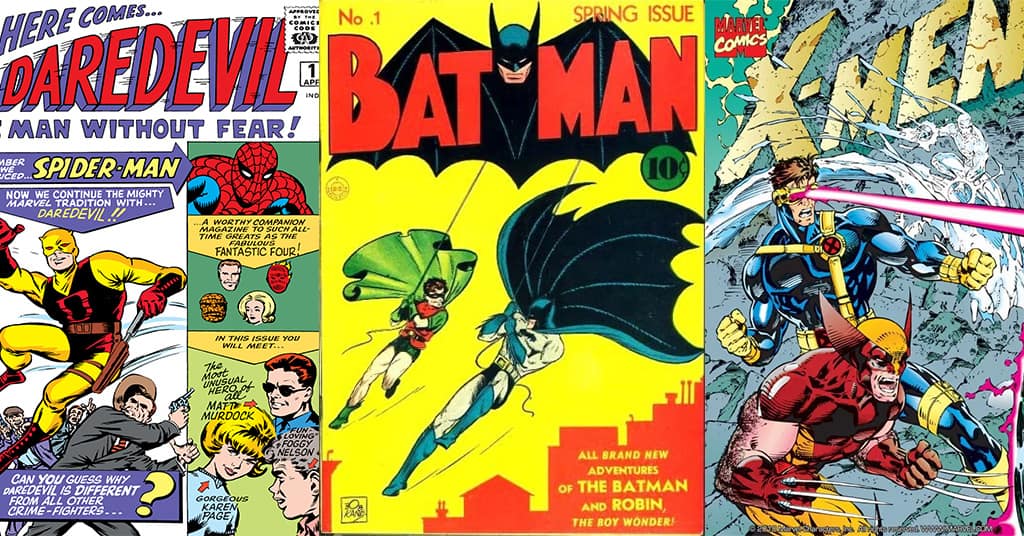It seems like every week there is a new #1 issue of someone’s favorite series coming out. We have all heard the majority public opinion about this, “Why do these comic publishers have to constantly reboot or renumber our favorite ongoing series?” The obvious and correct answer purely has to do with new readership and multimedia tie-ins. First issues are always going to be more popular and sell better than anything else, and that’s purely because audiences recognize these issues as perfect jumping on points. While that is not always entirely true, there is an inherent value also presented to ongoing/semi-regular comic book readers that is often overlooked when the topic of new #1s comes into frame. Let’s take a look at the positive and negative aspects of renumberings and new #1s, and how industry differences make this concept harder and harder to understand.
To get the most obvious point out of the way, new #1s often serve as easy jumping on points. There are too many times a series can just get away from someone. Whether life gets in the way or the book’s release schedule grows too muddled, a new #1 signifies that there is a perfect spot for the reader to realign themselves with a title. Regular fans recognize this as the greater benefit but also know that this isn’t always the case. There are several instances where a book is released as a #1 when it is definitely not a good point to jump on. A great example of that is Daredevil by Chip Zdarsky and Marco Checcetto. This series technically has three #1s if you count the Devil’s Reign event that serves as the halfway point of the run. Jumping into either of the #1s after the first part of the series would leave anyone disappointed and confused. This was purely done to increase sales on the series, yet it served as a detriment to new fans who likely thought these were new starting points. This is where the concept of a #1 issue grows complicated, as it doesn’t always signify a great point to start reading a series.
Although a #1 issue may not always be the perfect jumping on point, there is value in looking to the reasoning behind the #1 and also the creative team/publisher. One required aspect of being part of the comic book fandom is research. Long time readers know the ins and outs, but this is a medium that is very hard to get into, with different #1s being only a footnote in a lot of the complicated nonsense that make it confusing. Sometimes just a quick Google search can help determine if a #1 issue is actually the start of something new or not. Usually, if this is a good jumping on point, the publisher will make that very apparent in the solicitation. Even #1s that require greater context will often have recap pages that will help recontextualize things, allowing the reader to go back and check that stuff out later on if they would like to. The key, however, is the research. Never jump onto a book purely because it is solicited as a first issue – you need to look into it first, make sure that the solicitation actually lists it as a jumping on point, and make sure that it has some sort of recap to bring you up to speed on the prior exploits of that character.
Now that we’ve discussed the more complex nature of #1s, it’s time to discuss the positives. Comic books are daunting. Not only are there countless new options coming out every week, but they are also quite expensive if you plan on buying several issues. This means that you really have to go into the comic book store with a plan; however, when this fails, seeing a #1 issue on the wall usually means that you may have a winner on your hands. With just a quick Google search or a conversation with the staff, you’ll likely be leaving with a new book. Because there is likely going to be a new #1 issue on any given week, you are almost guaranteed to have something to read even if none of your regular comics are on the shelves.
But what happens when that rare week comes by that you have no regular books scheduled to release, and no #1s are coming out? Comic book stores often will order plenty of #1s. Since they usually sell really well, come with a lot of variants, and look very enticing on shelves, comic book stores will make sure they fully stock up on these, so you are likely going to be able to find a few, even if you have to look in the back issues bins. This also means that you are better equipped to check something out if you are hearing positive press about it. We’ve all had that friend who gives us major FOMO when we miss out on a new series that came out a few weeks ago that has become all the rage in the comics world. #1s usually come with the added benefit that they are plentiful in stock, and when they sell out, they often receive reprints which you can find a few weeks to a month after release. So when your friend tells you that Void Rivals is setting up the new Transformers/G.I. Joe shared universe, don’t worry, chances are your comic book store still has some issues in stock for you to grab.
New #1s can be a confusing concept for new fans, but they also have a ton of benefits. Longtime fans have given these books a bad rap, but when series are often rebooted, placed under new creative teams, or are just going in a new direction, a new #1 serves as a great spot for anyone to jump on and find something new to love.
